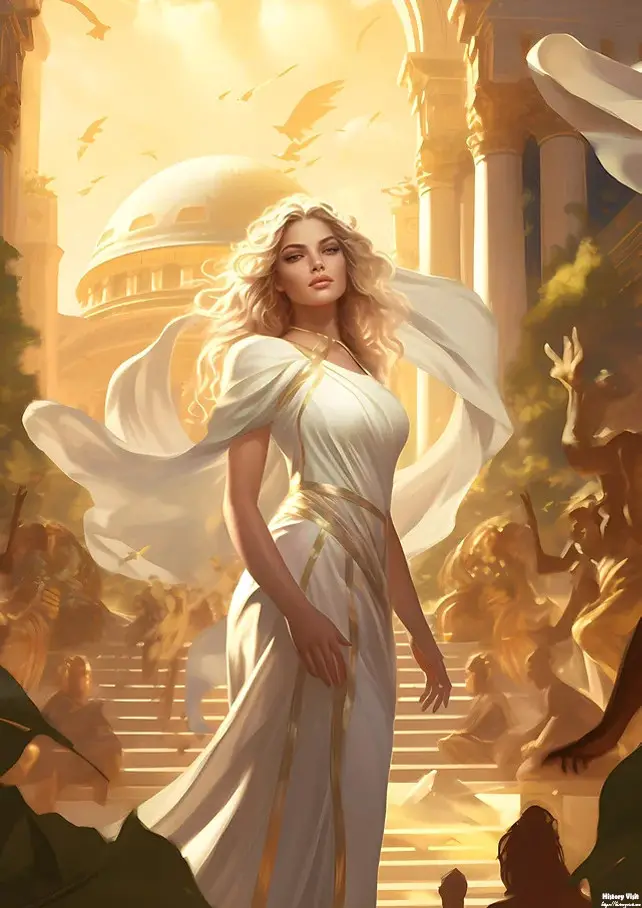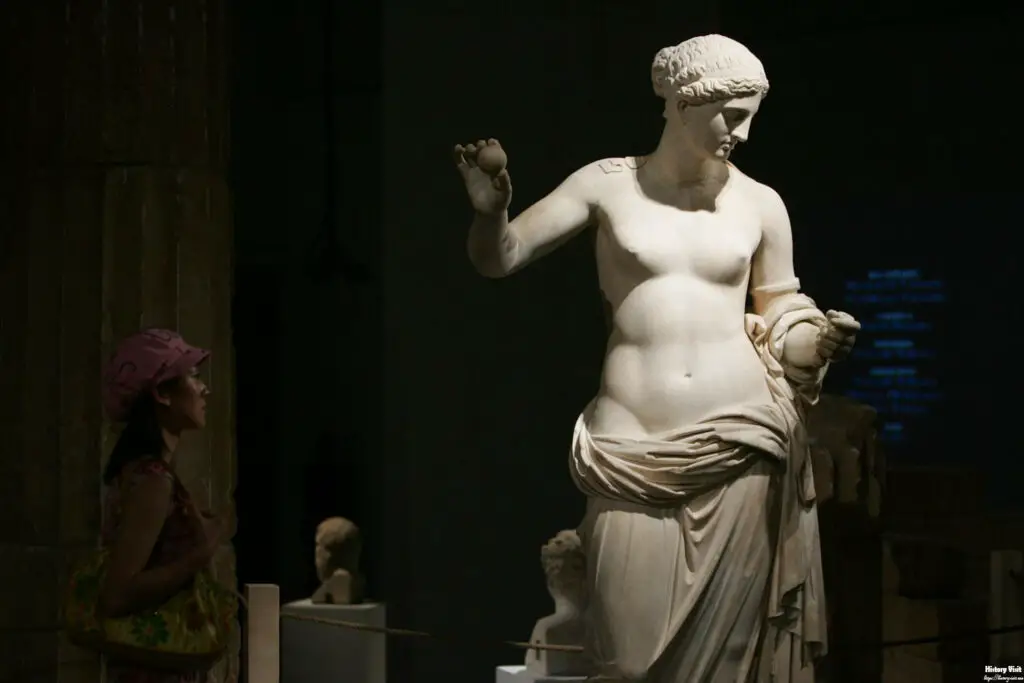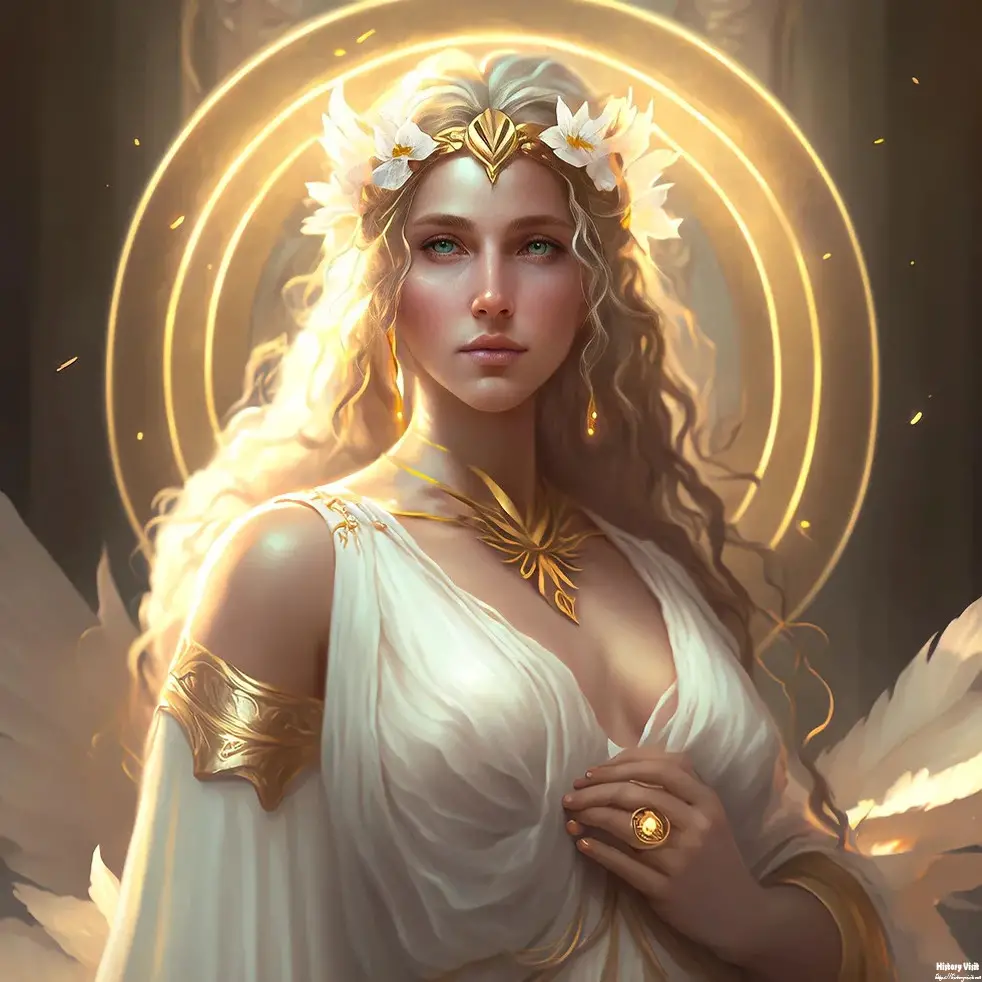The Greek Goddess of Love and Beauty

Introduction
Aphrodite, the Greek goddess of love and beauty, holds a prominent place in Greek mythology and culture. Known for her extraordinary charm and allure, she embodies the ideals of love, desire, and physical beauty. Aphrodite’s influence extends far beyond mere romantic relationships; she is a symbol of the powerful and often unpredictable nature of attraction and passion. Her stories, full of both tenderness and turmoil, reflect the complexities of love and the profound impact it has on both gods and mortals alike.

The myths surrounding Aphrodite often explore the dual nature of love—its capacity to bring joy and its potential to cause strife. Her interactions with other deities and mortals alike reveal a Greek goddess who is both revered and feared. As the embodiment of beauty, Aphrodite’s presence is felt in the natural world, the arts, and the hearts of those who fall under her spell. This multifaceted nature makes her one of the most intriguing figures in Greek mythology.
In exploring the origins, powers, relationships, and cultural significance of Aphrodite, we gain a deeper understanding of how the ancient Greeks perceived love and beauty. Her enduring legacy continues to inspire and captivate, reminding us of the timeless nature of these universal themes.
The Birth of Aphrodite, Greek Goddess of Love and Beauty

Aphrodite’s birth is one of the most fascinating tales in Greek mythology, marked by its unique and symbolic nature. According to Hesiod’s “Theogony,” she was born from the sea foam (aphros) that formed when the severed genitals of Uranus, the sky god, were cast into the sea by his son Cronus. This dramatic and mystical origin highlights her connection to the powerful and transformative forces of nature. Emerging fully grown and radiantly beautiful from the waves near the island of Cyprus, Aphrodite’s birth symbolizes the spontaneous and often uncontrollable nature of love and beauty.
The symbolism of Aphrodite’s birth extends beyond her aquatic origins. Her emergence from the sea represents the idea that beauty can arise from chaos and violence, transforming turmoil into something profoundly beautiful. This duality is a recurring theme in her myths, where love and beauty often coexist with conflict and suffering. The sea, with its constant movement and ability to both nurture and destroy, serves as a fitting birthplace for the Greek goddess who governs the similarly unpredictable realm of love.
In addition to Hesiod’s account, other versions of her birth exist, such as the Homeric Hymns, which suggest she is the daughter of Zeus and Dione. Regardless of the variations, the core aspects of her origin emphasize her unparalleled beauty and her role as a divine force of attraction and desire. This complex and rich origin story sets the stage for Aphrodite’s influence and the myriad ways she impacts the world of gods and mortals.
Aphrodite’s Family and Relationships as a Greek Goddess

Aphrodite’s place among the Olympian gods is significant, reflecting her status and the profound impact she has on the divine and mortal realms. As a Greek goddess, she interacts with many other gods, forming relationships that are central to numerous myths. Her beauty and charm make her a desirable figure, leading to both harmonious and contentious interactions within the divine family.
One of Aphrodite’s most well-known relationships is her marriage to Hephaestus, the god of fire and forge. This union, arranged by Zeus, is intriguing given Hephaestus’s contrasting qualities—he is depicted as lame and physically unattractive, a stark contrast to Aphrodite’s radiant beauty. Despite their marriage, Aphrodite’s heart often strayed, leading to numerous affairs with other gods and mortals, the most famous being her love affair with Ares, the god of war. This relationship symbolizes the powerful, and sometimes destructive, interplay between love and conflict within the realm of the Greek gods.
Aphrodite’s interactions are not limited to the gods. She plays a crucial role in the lives of many mortal heroes and figures, such as Paris, whose judgment she influenced by offering him Helen, sparking the Trojan War. Her relationship with Adonis, a mortal of extraordinary beauty, further illustrates her profound influence on human lives. This tragic love story, marked by Adonis’s untimely death and subsequent partial resurrection, highlights the themes of love, loss, and renewal. Through these relationships, Aphrodite’s character is revealed as multifaceted—capable of deep affection and passion, but also instigating discord and heartache.
Aphrodite in Art and Literature as a Greek Goddess

Aphrodite’s influence extends far beyond mythology into the realms of art and literature, where she is celebrated and depicted in countless forms. Her representation in ancient art highlights her unparalleled beauty and the ideals of feminine grace and allure. Sculptures such as the famous Venus de Milo capture her timeless elegance, while numerous vase paintings depict her in various mythological contexts, often accompanied by symbols like the dove, swan, and rose.
In literature, the Greek goddess Aphrodite is a central figure in many works, both ancient and modern. Homer’s “Iliad” and “Odyssey” include significant references to her, illustrating her role in the lives of gods and heroes. The “Homeric Hymns” dedicated to her celebrate her beauty and power, emphasizing her ability to inspire love and desire in all beings. Later literary works, from classical tragedies to Renaissance poetry, continue to explore her complex character, reflecting society’s evolving views on love and beauty.
Aphrodite’s portrayal in the arts often emphasizes her dual nature. While she is frequently depicted as the epitome of physical beauty and sensuality, these representations also hint at the deeper, more tumultuous aspects of love that she governs. This artistic and literary legacy ensures that the Greek goddess Aphrodite remains an enduring symbol of the powerful and often contradictory forces of love and beauty, inspiring admiration and reflection through the ages.
Conclusion

Aphrodite’s multifaceted nature as the Greek goddess of love and beauty highlights her profound impact on mythology, art, and culture. Her origins, emerging from the sea foam in a dramatic and symbolic birth, underscore her connection to the elemental and transformative forces of nature. As a divine figure, her relationships with gods and mortals reveal the complexities of love, ranging from passionate and nurturing to tumultuous and destructive.
Through her depictions in art and literature, the Greek goddess Aphrodite’s influence extends beyond mythology, shaping cultural ideals of beauty and romantic desire. Her symbols, such as the dove and the rose, continue to represent the enduring power of love, while her stories provide insight into the human experience of affection, jealousy, and loss. This rich cultural legacy ensures that Aphrodite remains a relevant and captivating figure, reflecting timeless themes that resonate across generations.
In celebrating Aphrodite, we acknowledge the ancient Greeks’ understanding of love’s dual nature—its capacity to bring both joy and sorrow. Her myths remind us of the profound impact that love and beauty have on our lives, encouraging us to reflect on these universal experiences. As we continue to explore and reinterpret her stories, the Greek goddess Aphrodite’s legacy endures, offering inspiration and insight into the complexities of the human heart.


